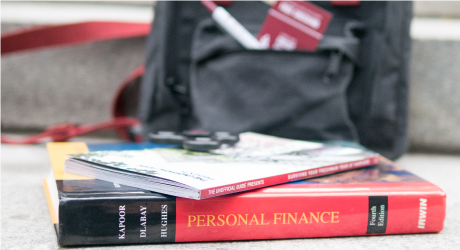The lazy days of summer are slowly but surely coming to an end, which means it’s almost time to hit the books. Whether it’s you or your kids who are headed back to school, one thing’s certain – the start of the academic year means back to school costs.
To help you survive the back to school season without breaking the bank, here are five surprising ways to save on this year’s back to school spending.
1. Plan, Plan, Plan
Small costs add up quickly when you’re in the back to school shopping mindset. A pack of gel pens here, a two-for-one spiral notebook there, and suddenly you’re $100 over budget with an overflowing cart of supplies that, upon closer inspection, you don’t actually need.
Reduce impulse buys by making a careful list of everything you need, before the start of the semester. Check around the house to make sure you haven’t forgotten about any school supplies hiding in drawers and cabinets, and when you’re ready, hit the stores. Planning and listing our your needs beforehand will help you avoid tempting special offers around this time of year. Remember – if you’re spending money on something you don’t need, it’s not a good deal.
2. Discover the Best Deals
Don’t let back to school sales sway you into buying too much, but at the same time, do pay attention to the seasonal sales and use them to your advantage. Sign up for deal and discount alerts from stationary supply chains and big box retailers, and follow these stores on social media. Online followers often get first warning of especially good deals, and are sometimes entitled to an exclusive discount.
Electronics outlets often have fantastic sales as well around this time of year, so if you or your child are likely to need a new laptop in the next few months, it could be better value to buy one when the back to school sales are on.
3. Organize a Swap
Swaps with friends are a great way to reduce back to school costs as a community. You might do a kids’ clothing swap, an art supply swap or a textbook swap. The idea is simple – everyone brings items in good condition that they don’t want, to trade for things brought by someone else. You can make it a casual afternoon where everyone brings and takes as much as they need, or if you have a very large group, consider a more formal system in which each person is required to bring and take a certain amount.
If you need more advice on hosting a swap, check out ideas online. You can even join an online swap, with websites that help you post the items you have and request items you need.
4. Invest to Save
Sometimes, it pays to spend a little more up front in order to save more throughout the school year. Lunches are a great example. Paying for lunch out every day really adds up, but if you purchase a few tools at the start of the school year, you can make it easier and more fun to pack a lunch at home. Invest in some good quality Tupperware and a nice looking, easy to carry lunch sack that will encourage you or your kids to bring food from home. Other kitchen tools like a giant mixing bowl for making a week’s worth of pasta salad, or mason jars for DIY healthy instant noodles, can also be useful.
5. Think Carefully About Textbooks
Textbooks are a top back to school cost for college students and their families, so it’s important to think carefully about how to offset this spending. Don’t just rush out and buy every book on the list. Instead, check around at local libraries and second-hand stores to see what’s available. It’s also worthwhile to check if an e-book version might be cheaper. Ask the professor if you’ll be using the whole book, or just excerpts which can be photocopied from a friend. You can even share a book with another student, especially if it won’t be frequently used.
.png?width=258&height=68&name=Harvard_Primary_Logo_Horiz_RGB%20(2).png)




